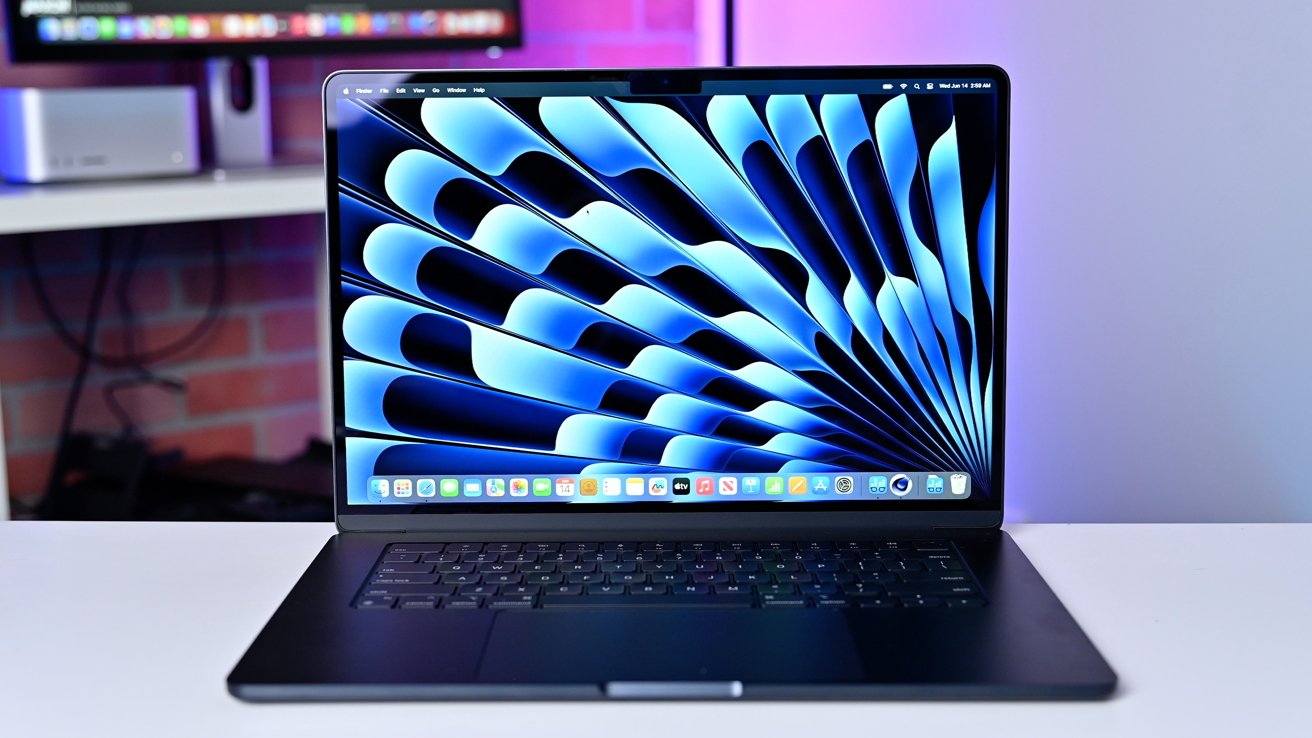Apple Silicon is why 15-inch MacBook Air was possible at all
Apple executives recently shared insights on the development of the 15-inch MacBook Air, which was designed to meet the needs of both consumers and enterprise users.

15-inch MacBook Air
During WWDC 2023, Apple unveiled the much-awaited 15-inch MacBook Air. It boasts similar features to the 13-inch MacBook Air, such as the impressive M2 chip, but stands out with its noticeably larger display.
Senior Product Manager Laura Metz and Enterprise IT Marketing Manager Thomas Tan sat down with Inc. to discuss how the 15-inch MacBook Air came to be.
The Cupertino-based tech giant wasn't trying to introduce a wholly new product when making the 15-inch MacBook Air. Instead, it wanted to help fill a gap in the market it had found and -- thanks to Apple Silicon -- it could.
"When we set out, we wanted to make a 15-inch MacBook Air," said Metz. "But when you think of what the designs looked like previously, it just didn't work. It just did not say 'Air' to us. It was only with Apple silicon where we were able to have all the right components to bring that larger display along with the battery life and performance that users would expect from a MacBook Air."
So, with the introduction of Apple Silicon, the company could provide a powerful yet portable laptop that could meet -- and even exceed -- the needs of the average consumer.
"We knew there were users that wanted more screen real estate, but did not need the additional capabilities and performance of the 14 or 16-inch MacBook Pro," said Metz.
But, as it turns out, it's not just consumers who are interested in 15-inch laptops; many enterprise clients are also seeking out laptops that fit this bill.
"We also know that the 15-inch PC Laptop market is significant--that carries over into the enterprise space as well, where users are interested in having that larger display."
With the introduction of a larger screen, coupled with Apple's powerful M2 chip, many businesses have decided to opt into the Mac ecosystem.
"Apple Silicon suddenly made MacBook Air that much more capable for business use," Tan told Inc.
"So we're certainly seeing a lot of customers making that wholesale switch that otherwise we wouldn't have seen before. We're seeing customers in retail industries, adopting MacBook Air, for everyday use, we're seeing that in manufacturing, and we're seeing that in healthcare. So we think Apple Silicon has broadened the appeal to enterprise customers by a significant margin."
AppleInsider took a look at the new 15-inch MacBook Air and found it a fantastic balance of portability, power, and size.
Read on AppleInsider

Comments
It wasn’t an Air anymore.
Meteor Lake is going to challenge a lot of narratives. Most of it was Apple marketing, but the tech media that repeated it as objective truth will have egg on their faces.
Back when I was in engineering school from '89~'94, I had my backpack filled with very thick and heavy books, one of which alone could best my existing 16" MBP many times over. So I have no sympathy or understanding for people who think even the 16" MBP is thick, large and heavy. It's not at all. I suppose that means others are wimps and I am therefore a macho man; but let me tell you, I'm no Arnold Schwarzenegger. And yet I can carry around a 16" MBP with ease. It's nothing. Heck, back in the early days, people totted compact Macs like the 128K. I have one, and its original Apple branded tote bag too.
At the end of the day, I am NOT jealous of a thinner and less powerful notebook, especially since a 15" screen is SMALLER than my lovely 16" too. I do a lot of video editing and can use all the CPU and GPU power available to me. I have the 2TB SSD, and that is absolutely the right size to get, despite the high prices Apple charges for storage. I LOVE the fact I can get so much power in such a THIN machine, one that also runs rather cool too, not to mention being very quiet. And because it's not a baseline Mac that cut corners on specs and performance, it will last me a long time before I begin to feel the urge to upgrade.
I have to say, I am absolutely loving this puppy! My brain thinks of it more like the 15" MacBook Pro we have always wanted! Great keyboard, excellent sound, still a beautiful screen, 3x the battery life and less weight/bulk altogether a great package for the $1199 + Free $150 Apple Gift Card on offer at the EDU store right now!
Sure, the Apple Silicon makes it better in some aspects than an x86-laptop, but that applied equally to the 13 inch. The real reason there was no 15 inch Macbook Air is because Apple didn't want to make one. This, in turn, would be based on sales estimates vs lower sales of the MBP as some customers would prefer the MBA.